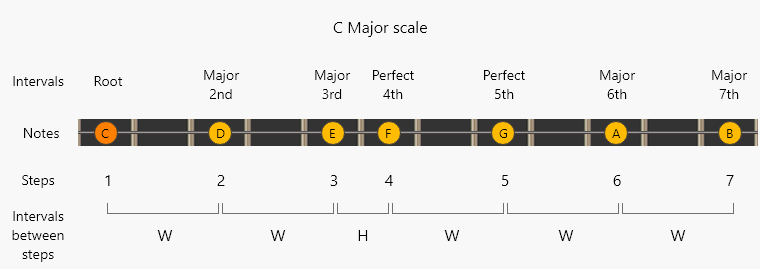Exploring the Versatility of Bass Guitar Jazz Scales: A Must for Every Jazz Musician
When it comes to jazz music, every musician understands the importance of versatility. The same goes for bass guitarists, who are responsible for setting the rhythm and foundation for the entire ensemble. One crucial element that every jazz bassist must master is the range of jazz scales explicitly designed for the bass guitar. These bass guitar jazz scales offer possibilities, allowing players to explore unique melodic and harmonic ideas.
This article delves into the versatility of bass guitar jazz scales and why they are necessary for every jazz musician. From the powerful and bluesy sound of the major blues scale to the jazzy and exotic vibe of the diminished scale, we explore how these scales can elevate your bass playing to new heights. We also provide tips on integrating these scales into your improvisations and compositions, allowing you to express your musicality in a distinctive jazz style.
Whether you’re a beginner looking to expand your playing or an experienced jazz bassist looking for fresh inspiration, understanding, and mastering bass guitar, jazz scales are an essential step in your musical journey. Join us as we unlock the secrets of these scales and immerse ourselves in the world of jazz bass guitar.
Table of Contents
The importance of jazz scales for bass guitarists
bass jazz scales
As a jazz bassist, your role is not just to play root notes and keep time. You are an integral part of the ensemble, contributing to the overall sound and feel of the music. Jazz scales provide the tools to create melodic and harmonic variations that add depth and complexity to your basslines. By mastering these scales, you can enhance your improvisations, compose intricate bass parts, and communicate effectively with other musicians in a jazz setting.
Major jazz scales for bass guitar
jazz scales bass guitar
The major scale is an essential building block of many other scales used in jazz music, and understanding it can open up a world of melodic possibilities. You can create complex and expressive basslines by learning the major scales and modes. One of the most exciting scales derived from the major scale is the major blues scale. This scale incorporates major and minor pentatonic scales, can add a soulful and emotional quality to your bass playing, and is particularly effective in blues and jazz-funk genres. By using the major blues scale, you can create bass solos that are both powerful and passionate.
Another vital scale derived from the major scale is the Lydian dominant scale. This scale is used to improvise over dominant chords and provides a jazzy and contemporary sound. Incorporating the Lydian dominant scale into your playing can add tension and release to your basslines, creating a sense of musical excitement and unpredictability.

Minor jazz scales for bass guitar
Jazz music relies heavily on both major and minor scales. While major scales often create upbeat and cheerful compositions, minor scales provide a more reflective and melancholic sound that can be particularly striking in ballads and other slower pieces. One of the most commonly used minor scales in jazz is the natural minor scale, also known as the Aeolian mode, which has a haunting quality that can evoke powerful emotions in listeners.
With its raised 7th degree, the harmonic minor scale adds a touch of exoticism to your bass playing. This scale is commonly used in Latin jazz and fusion genres, allowing you to create complex and colorful basslines that capture the listener’s attention. Incorporating the harmonic minor scale into your improvisations can add a unique flavor to your bass solos and compositions.
Dominant jazz scales for bass guitar
Dominant chords are a staple in jazz music, and understanding the scales that can be used over them is essential for any jazz bassist. The Mixolydian scale, derived from the major scale, is the most common scale used to improvise over dominant chords. Mastering the Mixolydian scale allows you to create groovy and bluesy basslines that drive the music forward and keep the audience engaged.
Another vital scale for dominant chords is the altered scale. This scale creates tension and dissonance, adding excitement and unpredictability to your basslines. By incorporating the altered scale into your playing, you can produce bold and adventurous bass solos that push the boundaries of traditional jazz playing.
Diminished jazz scales for bass guitar
The diminished scale is versatile and can be used over various chord types, including diminished and dominant chords. This scale provides a unique and exotic sound, adding a touch of mystery and drama to your basslines. By understanding and incorporating the diminished scale into your playing, you can create intricate and harmonically rich bass parts that elevate the overall musical experience.
Pentatonic jazz scales for bass guitar
Pentatonic scales are essential for any bassist to add melodic and rhythmic interest. With its simple and catchy intervals, the major pentatonic scale is widely used in jazz music to create memorable basslines and solos. By mastering the major pentatonic scale, you can produce grooves that are both accessible and infectious, captivating the audience with your melodic sense.
With its bluesy and soulful sound, the minor pentatonic scale is another critical scale for jazz bassists. This scale is commonly used in improvisations and allows you to create dynamic and expressive bass solos that tug at your listeners’ heartstrings. By incorporating the minor pentatonic scale into your playing, you can evoke a wide range of emotions and connect with your audience on a deeper level.
Modal jazz scales for bass guitar
Modal jazz scales are derived from the major scale modes and provide a unique and sophisticated sound. Understanding and mastering these scales allows you to create captivating basslines that transport the listener to different musical landscapes. With its minor sound and jazzy flavor, the Dorian mode is commonly used in modal jazz compositions and allows you to create intricate and melodic bass parts.
Another necessary modal scale is the Mixolydian mode. This scale is commonly used over dominant chords and provides a groovy and bluesy sound. By incorporating the Mixolydian mode into your playing, you can create funky and melodic bass, adding a sense of joy and celebration to the music.
Modal jazz scales are derived from the major scale and provide distinct tonal colors. Let’s explore the modes created from the C Major Scale:

- Ionian (Major):
- Tonic: C
- Notes: C D E F G A B

- Dorian:
- Tonic: D
- Notes: D E F G A B C

- Phrygian:
- Tonic: E
- Notes: E F G A B C D
- Lydian:
- Tonic: F
- Notes: F G A B C D E
- Mixolydian:
- Tonic: G
- Notes: G A B C D E F

- Aeolian (Natural Minor):
- Tonic: A (identical to A Minor Scale)
- Notes: A B C D E F G
- Locrian:
- Tonic: B
- Notes: B C D E F G A
These modes share the same notes as the C Major Scale but start and end on different root notes. Modal jazz often employs these modes to create rich harmonic textures and unique improvisational possibilities. Explore them on your instrument!
Incorporating jazz scales into your bass guitar playing
Now that we have explored the versatility of bass guitar jazz scales, it’s time to discuss how to incorporate them into your playing. One effective way to integrate jazz scales into your basslines is to practice them in isolation. By familiarizing yourself with the fingerings and intervals of each scale, you can develop muscle memory and fluency on the instrument.
Once you feel comfortable with the scales, it’s time to start integrating them into your improvisations and compositions. Experiment with different scale patterns, rhythms, and techniques to create unique and interesting basslines. Don’t be afraid to take risks and explore new musical ideas. The more you practice and experiment with jazz scales, the more natural and intuitive they will become in your playing.
Conclusion: Enhancing your jazz bass guitar skills with jazz scales
Mastering bass guitar jazz scales is crucial to becoming a versatile and proficient jazz bassist. These scales provide the tools to create melodic and harmonic variations, allowing you to express your musicality in a distinct jazz style. The possibilities are endless, from the powerful and bluesy sound of the major blues scale to the jazzy and exotic vibe of the diminished scale.
Here’s a table summarizing the information for each of the seven common musical scales:
| Scale | Pattern | Example Notes |
|---|---|---|
| Major Scale (Ionian) | W-W-H-W-W-W-H | C D E F G A B |
| Natural Minor Scale (Aeolian) | W-H-W-W-H-W-W | A B C D E F G |
| Harmonic Minor Scale | H-W-W-H-W-(W+H)-H | E F G A B C D# |
| Melodic Minor Scale (Ascending) | W-H-W-W-W-W-H | D E F G A B C# |
| Melodic Minor Scale (Descending) | W-W-H-W-W-H-W | D C B♭ A G F E |
| Pentatonic Major Scale | W-W-(W+H)-H-(W+H) | G A B D E |
| Pentatonic Minor Scale | (W+H)-W-W-(W+H) | B D E F# A |
| Blues Scale | H-(W+H)-H-W-W | F G B♭ B C D |
Feel free to explore these Bass Guitar Jazz Scales on your Bass Guitar!
Whether you’re a beginner looking to expand your playing or an experienced jazz bassist looking for fresh inspiration, understanding and mastering bass guitar jazz scales will elevate your playing to new heights. So, grab your bass, dive into jazz scales, and let your creativity soar. The journey may be challenging, but the rewards are truly worth it.



